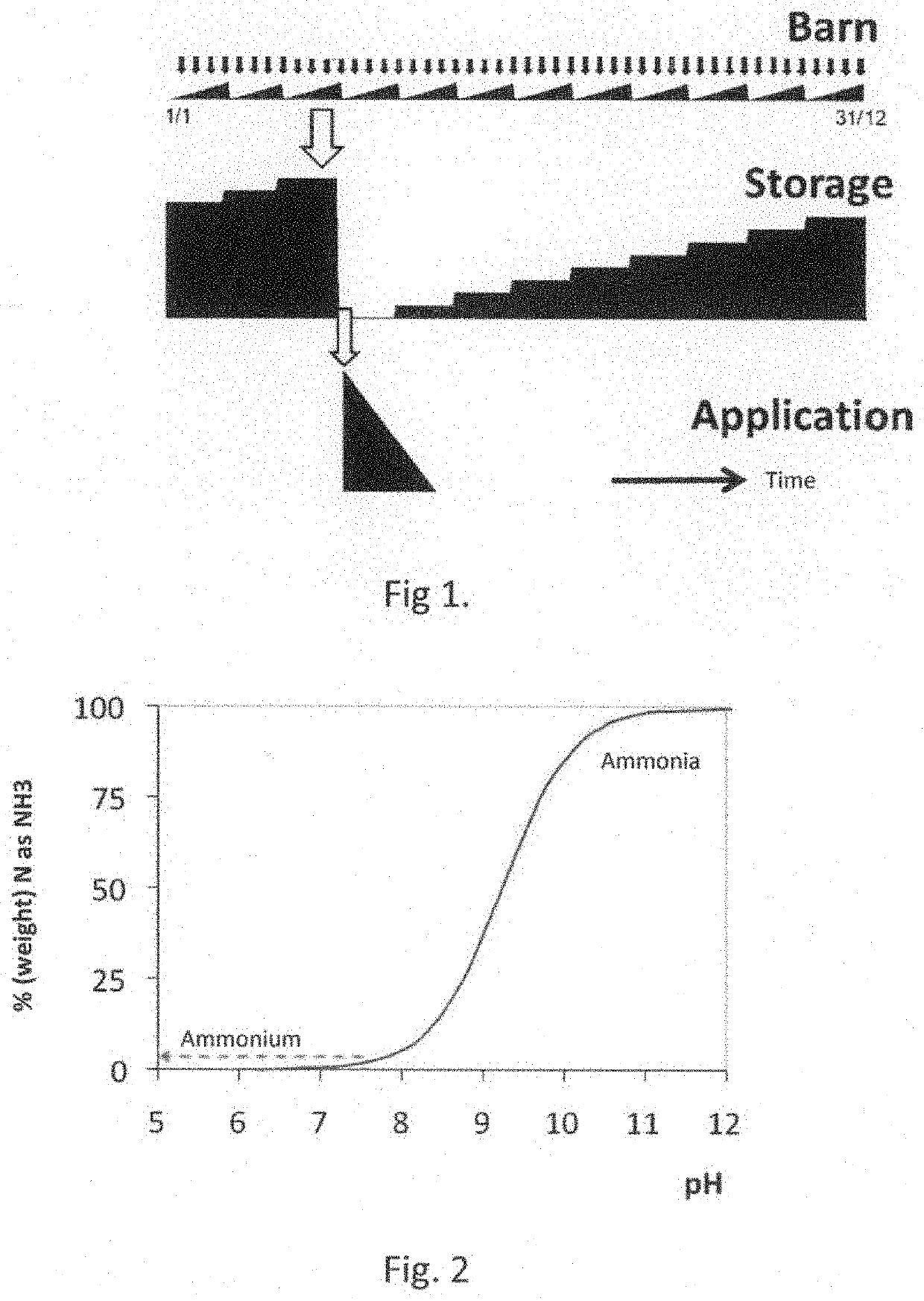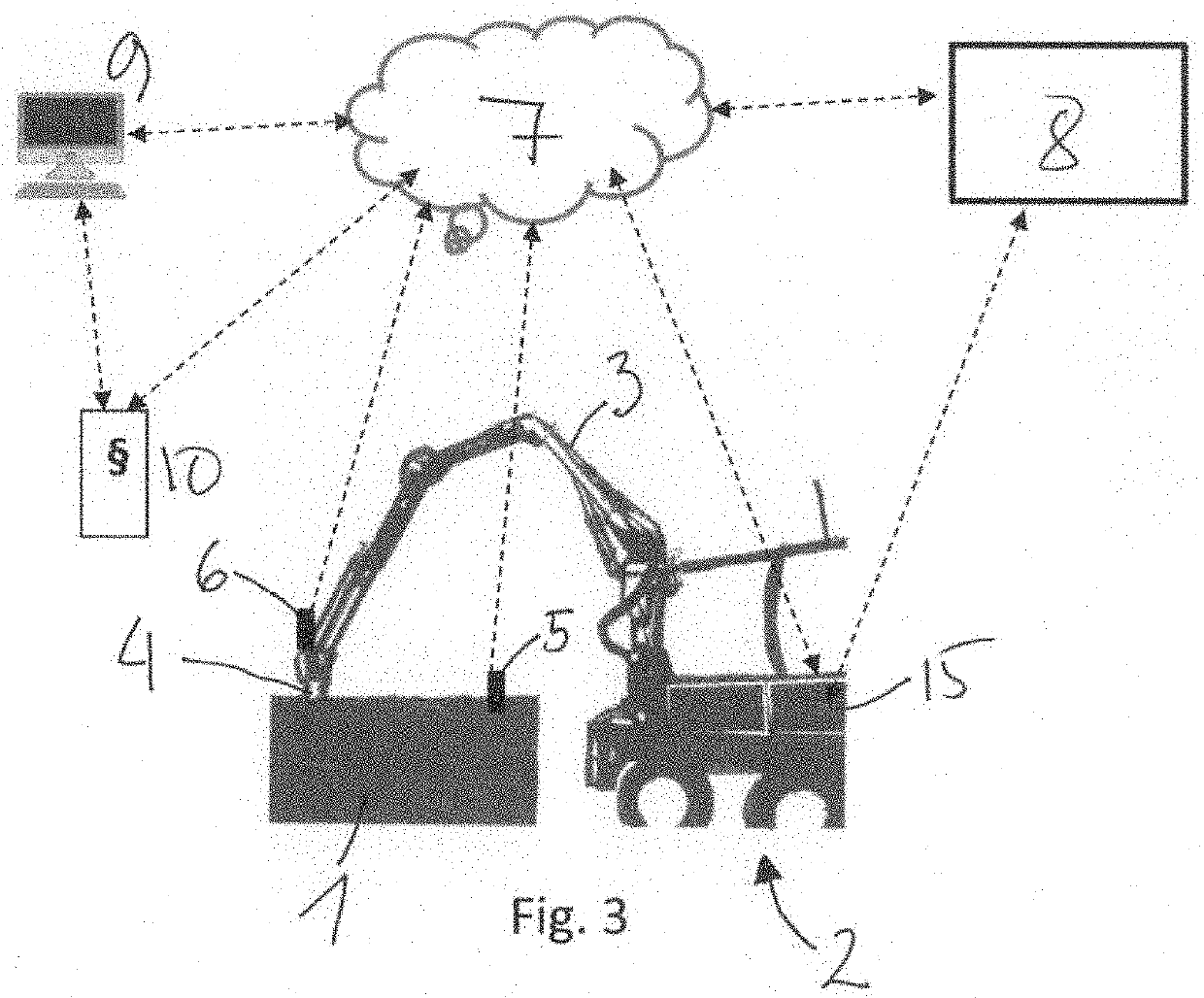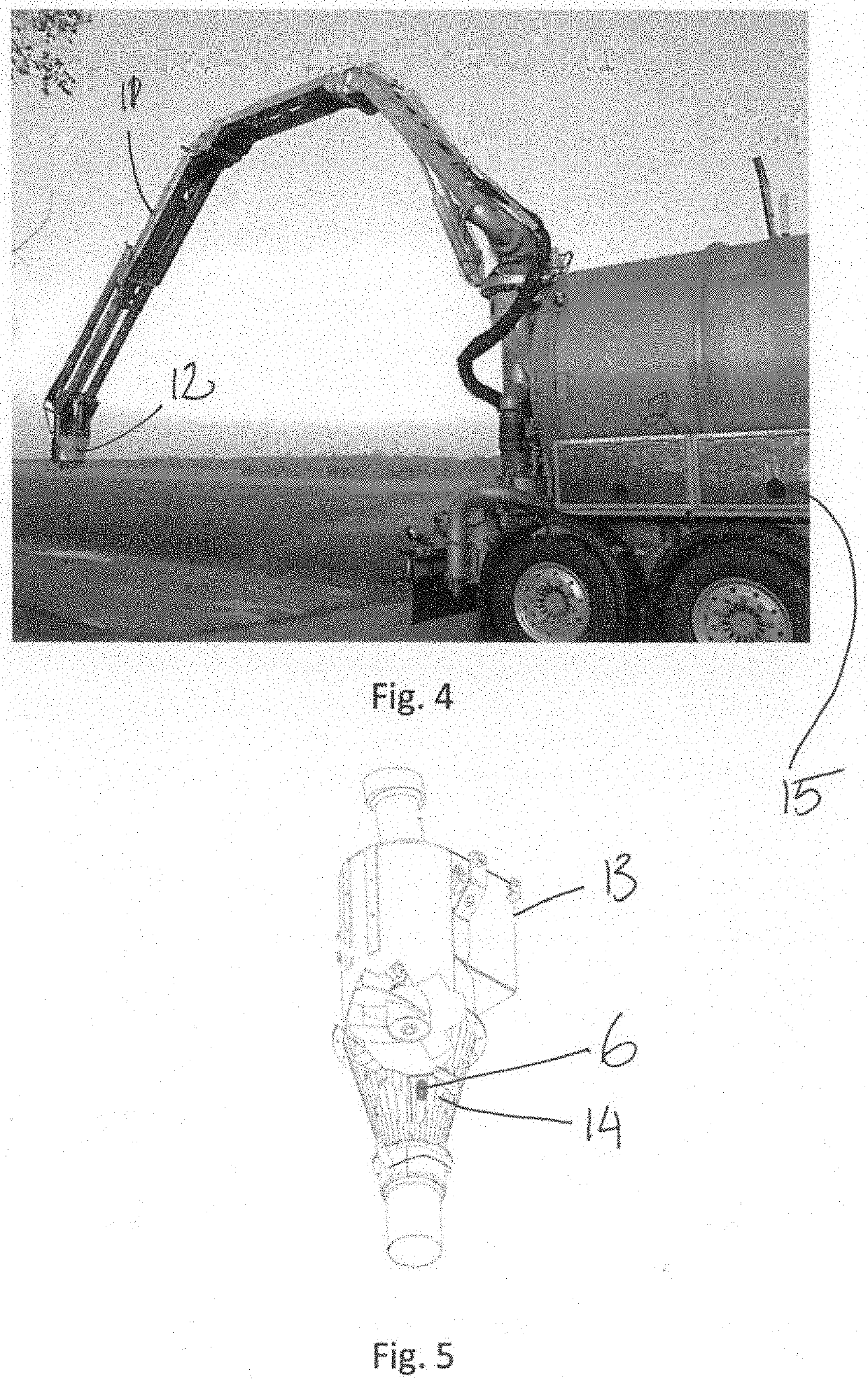Gas emission reducing system and method for reducing at least one of green house gases and ammonia emissions from slurry stored in one or more slurry storage tanks
- Summary
- Abstract
- Description
- Claims
- Application Information
AI Technical Summary
Benefits of technology
Problems solved by technology
Method used
Image
Examples
Embodiment Construction
lass="d_n">[0169]A gas emission reducing system for reducing emission of greenhouse gasses, in particular methane, laughing gas and / or nitrogen oxides, and / or ammonia from slurry stored in one or more slurry storage tanks 1 is illustrated in FIG. 3. The system is based on a centralized control system, where many farmers' slurry storage tanks can be monitored and / or serviced with addition of acid. The system comprises a fleet of one or more acid tanker trucks 2, such as semitrailer tank trucks
[0170]Each of the one or more acid tanker trucks 2 further comprise a crane arm 3 with acid addition means or acid addition and with mixing and / or pumping means or pump 5 for mixing or stirring slurry in a slurry storage tank 1 and / or for pumping the slurry.
[0171]The system further comprises one or more pH sensors 5 arranged to detect pH of the slurry in the one or more slurry storage tanks 1.
[0172]The system further comprises a central control unit 8 comprising, or in communication with, a data...
PUM
 Login to view more
Login to view more Abstract
Description
Claims
Application Information
 Login to view more
Login to view more - R&D Engineer
- R&D Manager
- IP Professional
- Industry Leading Data Capabilities
- Powerful AI technology
- Patent DNA Extraction
Browse by: Latest US Patents, China's latest patents, Technical Efficacy Thesaurus, Application Domain, Technology Topic.
© 2024 PatSnap. All rights reserved.Legal|Privacy policy|Modern Slavery Act Transparency Statement|Sitemap



